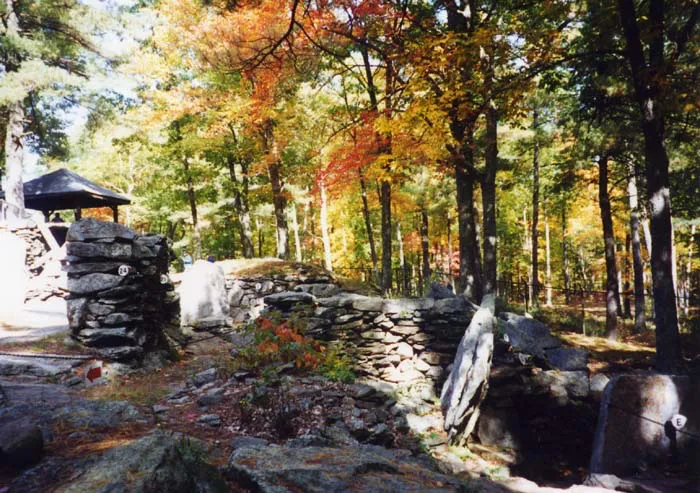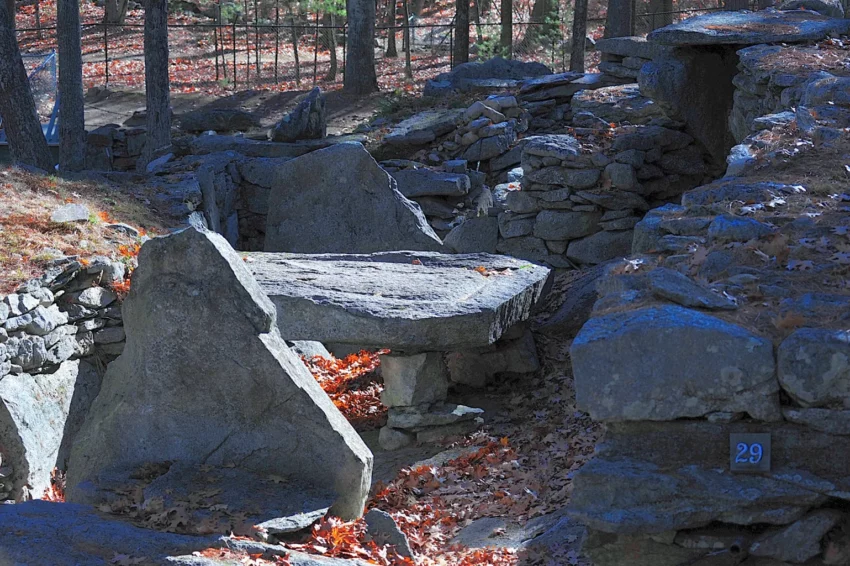Overview of America’s Stonehenge
Located in Salem, New Hampshire, America’s Stonehenge sprawls across 30 acres. This site features a collection of large rocks and stone structures. It doubles as a tourist attraction and archaeological site, complete with snowshoe trails and an alpaca farm.
Get your dose of History via Email
The Origins and Theories
Several theories exist about the purpose of these structures. One suggests they result from local 18th and 19th-century farming practices. Another credits the site’s construction to William Goodwin, who bought the land in 1937. Some believe in a pre-Columbian European origin, but experts dismiss this as pseudoarchaeology.
A Change of Name
Originally called Mystery Hill, the site was rebranded as “America’s Stonehenge” in 1982. This change aimed to distance it from being seen merely as a roadside attraction. It also emphasized its significance as an ancient archaeological site.
Archaeological Insights
Charcoal found at the site indicates human activity around 4,000 years ago. Excavations have unearthed evidence of tool manufacture by Native Americans, though no European artifacts have surfaced. The site’s stone suggests quarrying by indigenous methods.

Historical Context
The land first appears in Salem’s 1907 history as Jonathan Pattee’s Cave. Pattee, a local figure, used the caves for storage. It’s widely believed he built much of what is seen today. The site’s history is complex, shaped by individuals like Goodwin who promoted the idea of Irish monks pre-dating Columbus in America.
Vandalism and Preservation
Recently, the site has faced vandalism, reflecting its controversial status. In 2019, damage was done possibly as part of a fictional re-enactment. Then in 2021, a man associated with “QAnon” was arrested for related criminal mischief.
The “Sacrificial Stone” Myth
One intriguing feature is the “sacrificial stone,” which some claim was used to channel blood. However, it likely served as a lye-leaching stone or cider press bed, common in historical New England farming.
In Popular Culture
H.P. Lovecraft, known for his horror writing, visited the site, which allegedly inspired “The Dunwich Horror.” Additionally, the site has been featured on TV shows like “Secrets of the Ancient World” and “In Search of…,” which explored its ancient mysteries.
Conclusion
America’s Stonehenge remains a fascinating enigma wrapped in the mystique of history, archaeology, and legend. Whether as a historical site or a cultural oddity, it continues to spark debate and capture the imagination of visitors and scholars alike.
Sources: Wikipedia

